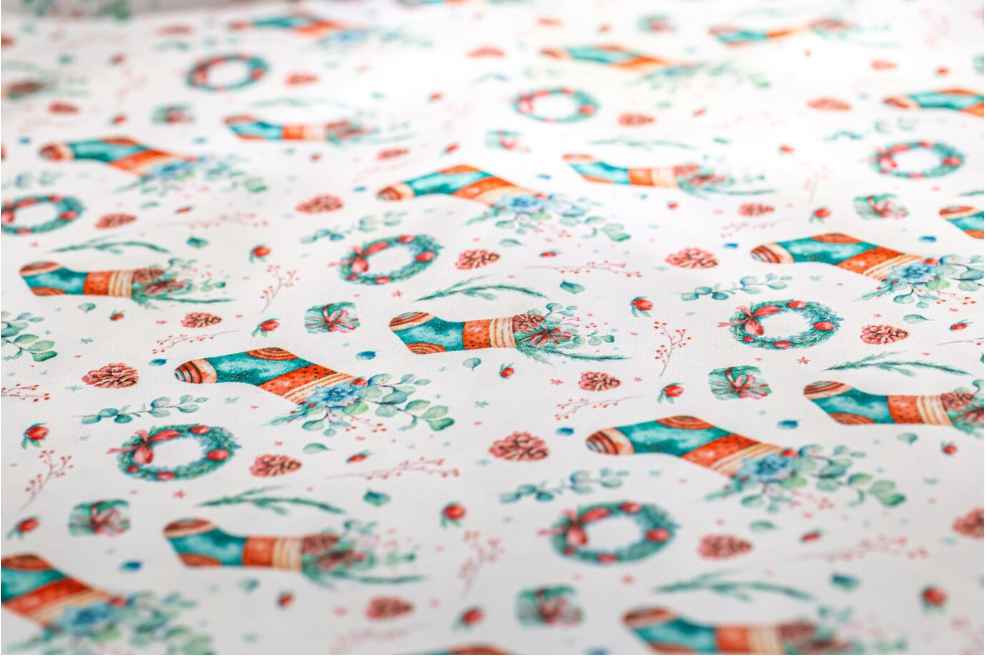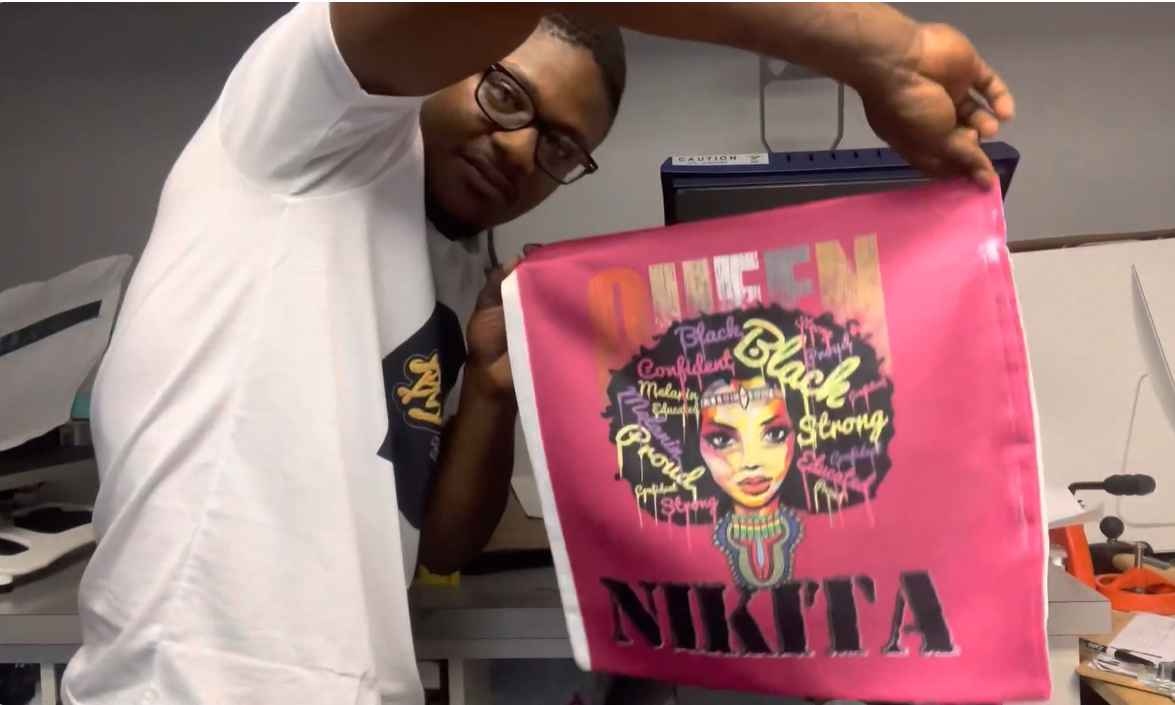Yes, you can sublimate on satin, provided the fabric has a polyester coating. The sublimation process requires high heat to transfer dye into the material.
Sublimation printing has revolutionized the world of fabric design, offering a way to infuse textiles with vibrant, long-lasting colors. Satin, with its glossy sheen and smooth surface, is a popular choice for creating stunning visuals on clothing, accessories, and home decor.
To successfully sublimate on satin, the key factor is the presence of polyester or a polymer coating, as sublimation ink can only bond with these materials. With the right satin blend or coating, the high heat and pressure of the sublimation process turn the ink into a gaseous form, which then solidifies within the fabric’s fibers, leaving a print that is incredibly durable and resistant to fading. This method is ideal for custom designs that demand precision and vibrancy, making it a favorite among designers and creatives who aim to produce eye-catching pieces.
Satin’s Suitability For Sublimation

Exploring the potential for sublimation on satin is a hot topic for crafters and designers. Satin’s unique sheen and smooth surface may raise questions about its compatibility with the sublimation process. Let’s delve into the properties of satin and how it compares to other fabrics in the sublimating world.
Properties Of Satin
Satin fabric dazzles with its smooth, glossy front surface. This luster is due to its weave, which aligns most threads on the top. Here are key traits to note:
- Silky texture: Slides easily, making it attractive for high-end products.
- Lustrous surface: Ideal for vibrant and glossy print finishes.
- Heat sensitivity: Can withstand sublimation temperatures with careful handling.
- Varied blends: Satin can be 100% polyester or a blend and this impacts sublimation quality.
Comparing Satin With Other Fabrics
Satin stands out when placed next to other common fabrics in the sublimation process. For sublimation, fiber content is crucial. Let’s compare:
| Fabric | Fiber Content | Sublimation Suitability |
|---|---|---|
| Polyester | 100% | Excellent |
| Cotton | Natural fibers | Poor without coating |
| Satin | Polyester or blend | Good to Excellent |
Polyester satin is the top choice for sublimation, offering crisp, colorful prints. Blended satins require more attention but still yield decent results. Always remember to test your specific satin fabric to ensure the best outcome.
Fundamentals Of Sublimation Printing

Sublimation printing is an exciting method. It transfers vibrant, full-color images onto materials. Unlike regular printing, sublimation ink turns into gas. Heat and pressure create this reaction. It bonds the ink with the material’s surface for lasting results.
The Sublimation Process
Sublimation is simple but has a few critical steps:
- Create a design using graphic software.
- Print it on special sublimation paper.
- Place the print on your material, like satin.
- Use a heat press to transfer the design.
- Peel off the paper to reveal the image.
Colors appear bright and long-lasting. Images won’t peel, crack, or fade. It’s perfect for fabrics, like satin or polyester.
Materials And Equipment Needed
To sublimate on satin, you’ll need:
- Sublimation printer with sublimation ink.
- Sublimation paper to print your design on.
- Heat press for transferring the design.
- Satin item to sublimate onto.
- Protective paper or Teflon sheet.
Ensure your satin has a poly-coating if not made of polyester. This is essential for the sublimation process. Use a suitable heat press for the material. Not all fabrics tolerate high heat equally.
Keep in mind, that sublimation is permanent. Always check your equipment and materials before you start. Double-check your design for any errors. It saves time and resources.
Prepping Satin For Sublimation
Wondering if satin can catch the sublimation fever? Yes, it can! Transform plain satin into a work of art with the right preparation. Before diving in, let’s make sure satin is ready for a sublimation makeover.

Surface Treatment
Satin’s glossy surface needs a little tweak to fully embrace ink. Here’s how:
- Clean the fabric to remove oils and residues.
- Use a spray to lightly mist the satin for better ink adherence.
- Allow it to dry completely before proceeding.
Heat Press Settings
Heat press settings are crucial for flawless results. Keep these factors in mind:
| Temperature | Time | Pressure |
|---|---|---|
| 380-400°F | 40-50 seconds | Medium |
Remember to use a teflon sheet to protect the fabric. Precise temperature and time ensure vibrant colors without scorching the satin.
Designing For Satin Sublimation
Sublimation on satin fabrics transforms ordinary pieces into vibrant works of art. The smooth, shiny surface of satin presents unique opportunities and considerations for designers. With the right approach, stunning, color-rich graphics can bloom on satin canvases.
Color Considerations
Colors appear differently on satin due to its sheen. Think bold and bright when planning your design. Satin amplifies light, giving sublimated colors extra shine and intensity. Stick to high-contrast color schemes for best results. Testing swatches first ensures no surprises in the final product.
- Use strong saturation to counteract potential dullness.
- Employ a dark outline around light elements to make them pop.
- Avoid pastels that may appear washed out.
Pattern And Image Optimization
Sublimating intricate designs on satin demands attention to detail. Larger, bolder patterns work best, ensuring clarity and impact. Fine lines and small text may get lost in the fabric’s texture.
| Design Element | Tips for Satin Sublimation |
|---|---|
| Pattern Size | Opt for larger, simpler patterns for better visibility. |
| Image Resolution | Aim for high-resolution images to avoid blurriness. |
| Text Legibility | Use bold, large fonts for readable text. |
Always review the entire design before sublimating. Keep in mind that satin scatters light, which can obscure fine details. Preparing your artwork especially for satin ensures its beauty and legibility upon transfer.
Step-by-step Sublimation On Satin
Welcome to the colorful world of sublimation on satin! This luxurious fabric transforms with vibrant prints and designs. Dive into the step-by-step process to personalize satin with your unique touch.
Printing The Transfer
Success begins with perfect prints. Here’s how:
- Select a high-quality sublimation printer.
- Choose sublimation ink for saturation and longevity.
- Pick a transfer paper specific to satin sublimation.
- Design the artwork at the exact size needed.
- Mirror the image for correct orientation after pressing.
- Print with the highest DPI for sharp, vibrant output.
Pressing Techniques
Pressing is pivotal for transfer application. Ensure the best results with these steps:
- Preheat the heat press to 400°F.
- Place satin fabric on the press and smooth out wrinkles.
- Position the printed transfer face down on the fabric.
- Use heat-resistant tape to secure the paper on the satin.
- Press for 30–50 seconds under medium pressure.
- Adjust time and temperature based on satin thickness.
Cooling And Finishing Touches
Wrapping up with care ensures lasting results. Follow these final touches:
- Remove the satin from the press carefully.
- Peel off the paper immediately while hot.
- Allow the fabric to cool on a clean surface.
- Inspect for any imperfections or missed spots.
- Trim edges for a neat finish, if necessary.
- Your satin masterpiece is ready for display or wear!
Tips For Quality Sublimation On Satin
Satin’s sleek and glossy surface may raise questions about sublimation capabilities. Fusing dye and fabric together, sublimation printing can indeed transform satin into a canvas for vibrant, intricate designs. Perfect execution requires careful attention to detail and technique.
Avoiding Common Mistakes
To achieve impeccable sublimation on satin, sidestep these common pitfalls:
- High Heat Sensitivity: Satin scorchs under too much heat. Use recommended temperatures.
- Inconsistent Pressure: Uniform pressure ensures thorough dye transfer. Avoid light spots.
- Moisture Issues: Pre-dry satin to prevent undesirable effects like ghosting.
- Time Management: Oversublimation can occur. Adhere to specific timing for your fabric.
Ensuring Longevity Of Printed Designs
Extended the life of your sublimated satin with these strategies:
- Quality Inks: Invest in top-notch sublimation inks for enduring vibrancy.
- Correct Fabric Choice: Satin with a higher polyester content takes sublimation better.
- Post-Press Care: Gentle washing preserves the printed designs longer.
- UV Protection: Limit exposure to sunlight to prevent design fade.
Creative Applications Of Sublimated Satin
Sublimating on satin introduces vibrant colors and patterns to the silky fabric. This process allows for limitless creativity. Designers and DIY enthusiasts alike can customize satin in unique ways. From high-fashion garments to customized home decor, sublimation printing transforms satin into personalized art. Dive into the world of sublimated satin and explore how it can elevate various creative projects.
Fashion And Apparel
Designers harness sublimation to create fashion that stands out. Intricate designs with bold colors are now possible.
- Elegant Dresses: Weddings or galas, sublimated satin gowns steal the spotlight.
- Unique Ties: Custom prints set a new trend in men’s fashion.
- Scarves: Transform an outfit with a splash of color.
One-of-a-kind items feature custom artwork. These pieces are treasured for their uniqueness.
Home Decor Ideas
Breathe new life into living spaces with sublimated satin. Every corner of the home can shimmer with personalized accents.
- Pillows: Add flair to sofas and beds with bespoke designs.
- Curtains: Rooms are brightened with custom curtains.
- Upholstery: Old furniture gains a new lease on life.
Style meets comfort with these satin embellishments, creating a luxurious atmosphere at home.
Innovative Uses In Accessories
Sublimated satin takes accessories beyond the ordinary. Custom elements turn everyday items into statement pieces.
| Accessory | Sublimation Idea |
|---|---|
| Bags | Standout prints make carriers fashionable. |
| Shoes | Satin shoes bloom with color. |
| Hats | Sublimated bands add personality to headwear. |
Satin’s adaptable nature ensures that accessories shine in both utility and appearance.
Frequently Asked Questions On Can You Sublimate On Satin
Does Sublimation Work On Satin?
Yes, sublimation works on satin if it’s polyester-based. Natural fibers like silk won’t retain the dye, so always choose synthetic satin for sublimation printing.
Can You Sublimate On a Satin Pillowcase?
Yes, you can sublimate on a satin pillowcase if it is made of polyester or a polyester blend, as sublimation requires a synthetic base to bond with the dye.
What Fabric Can You Not Sublimate On?
Sublimation does not work effectively on 100% cotton or non-polyester fabrics. Ideal materials for sublimation should contain a high percentage of polyester.
How Long Does It Take To Sublimate Satin?
Sublimation on satin typically takes about 30 to 60 seconds using a heat press at 400°F. Adjust timing based on fabric thickness.
Conclusion
To sum it up, sublimating on satin is a viable option for customizing fabric with vivid designs. With the right materials and technique, you can achieve professional-quality results. Whether it’s for personal projects or expanding your business offerings, mastering sublimation on satin opens up a world of creative possibilities.
Always remember to test and adjust your process for the best outcome.

